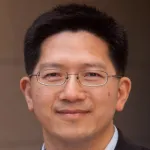 SANOFI-SUPPORTED BIOSTAR SPONSORED RESEARCH PROJECT - 2012
SANOFI-SUPPORTED BIOSTAR SPONSORED RESEARCH PROJECT - 2012
PJ Utz (Immunology & Rheumatology)
Shan Wang (Materials Science & Engineering)
The goal of this Bio-X proposal is to develop large-scale peptide arrays on silicon wafers that can be used for real-time measurements of medically and biologically important molecular interactions. Both of the investigators (Drs. Utz and Wang) have developed unique reagents and/or methods that are already impacting their individual fields. By now bringing together unique expertise between these investigators, the resources of chip manufacturer Intel, Inc (Santa Clara, CA), and inventive technologies, we will combine them to create and validate a new, transformative assay format. For our proposal to be successful, we require 4 components to exist, and we believe that all 4 are already in place. These include (i.) the ability to manufacture large scale peptide arrays by an industrial partner (Intel, Inc); (ii.) non-fluorescence (i.e., light-based) methods of detection. We will develop a new detection method using "giant magnetosensitive resistors (GMR)" that will allow us to convert measurements into electrical signals; (iii.) the ability to construct an integrated circuit that can interrogate each of the peptide features; and (iv.) clinically-relevant patient samples, and biologically relevant questions to ask in the fields of immunology and rheumatology.
The Utz lab at Stanford and laboratories at chip manufacturer Intel, Inc (Santa Clara, CA) have recently described creation of a large scale peptide array created on the surface of a silicon wafer, using a light-based synthesis method called photolithography. This array was used to characterize binding events at single amino acid resolution, including monoclonal and polyclonal antibody epitope mapping; serum autoantibody profiling using patient serum samples in the autoimmune disease systemic lupus erythematosus (SLE); kinase substrate profiling; and lysine methyl transferase profiling for "epigenetic" studies. Our studies utilized a traditional, fluorescence-based method of detection. What was exciting about our studies was the demonstration that peptides could be synthesized on a silicon surface, and that silicon is an outstanding material that is highly compatible with biological specimens. The clear next steps will be for Dr Wang’s group to develop magnetic sensing methods to replace fluorescence based methods, then to develop an integrated circuit, enabling real time detection of molecular interactions. We will take advantage of a bank of over 2,000 SLE serum samples collected from Dr. Utz's patients. Discovery of autoantibody profiles in SLE have the potential to subset patients and to enable personalized therapies to be developed.



